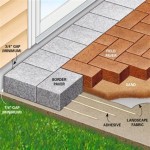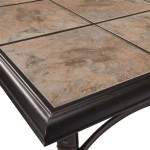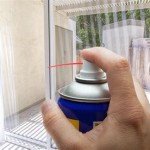```html
How To Weatherstrip a Sliding Patio Door
A sliding patio door offers a convenient and aesthetically pleasing transition between indoor and outdoor spaces. However, these doors can also be significant sources of drafts and energy loss if not properly weatherstripped. Effective weatherstripping seals gaps around the door frame and between the door panel and the frame, preventing air leaks, reducing energy bills, and improving overall home comfort. This article provides a comprehensive guide on how to weatherstrip a sliding patio door effectively.
Before embarking on the weatherstripping process, it is crucial to understand the potential areas where air leaks commonly occur in sliding patio doors. These areas typically include the top and bottom tracks, the sides of the door panel where it meets the frame, and the interlock area where the sliding panel meets the fixed panel. Addressing each of these areas with appropriate weatherstripping materials and techniques is essential for achieving a comprehensive seal.
Identifying Air Leak Locations
The first step in weatherstripping a sliding patio door is to meticulously identify all areas where air leaks are present. This can be accomplished through several methods. A simple visual inspection can often reveal obvious gaps or damaged weatherstripping. Holding a lit candle or incense stick near the door frame on a windy day can help pinpoint drafts as the flame or smoke will flicker or move in the direction of the airflow. Another method involves using a thermal leak detector, which will highlight areas of significant temperature difference, indicating air leakage. Regardless of the method used, a thorough inspection is necessary to ensure that all problem areas are identified and addressed during the weatherstripping process.
Specific areas to examine closely include:
*The Head Jamb:
The top of the door frame, where the door slides along the track. *The Sill:
The bottom of the door frame, also containing a track. *Side Jambs:
The vertical sides of the door frame. *Interlock (Meeting Rail):
The area where the sliding door panel and the fixed panel meet. *Door Panel Edges:
The edges of the sliding door panel itself.Once these areas are identified, it is important to assess the existing weatherstripping (if any) for damage, wear, or deterioration. Cracked, compressed, or missing weatherstripping will need to be replaced. Taking accurate measurements of the gaps you need to fill will save time and trips to the hardware store.
Selecting Appropriate Weatherstripping Materials
The market offers a variety of weatherstripping materials, each with its own advantages and disadvantages. The best choice for a particular sliding patio door will depend on the size of the gaps to be filled, the materials used in the door and frame construction, and the desired level of durability. Common weatherstripping materials include:
*Foam Tape:
An inexpensive and easy-to-install option suitable for small gaps. Foam tape is available in various thicknesses and widths, with self-adhesive backing for easy application. However, foam tape is not particularly durable and may need to be replaced frequently, especially in areas subjected to high friction or exposure to the elements. *Felt Weatherstripping:
Another affordable option, felt weatherstripping is often used for filling small gaps. It is less effective than other materials at sealing larger gaps and is also less durable. Like foam tape, it usually comes with an adhesive backing. *V-Strip Weatherstripping (Tension Seal):
Made of thin, flexible vinyl or metal, V-strip weatherstripping is designed to create a tight seal by pressing against the door or frame when the door is closed. It is more durable than foam or felt and can effectively seal moderate-sized gaps. V-strip is typically installed using adhesive or small nails. *Pile Weatherstripping:
Often used in the tracks of sliding doors, pile weatherstripping consists of a strip of fabric with dense, upright fibers that create a seal. It is relatively durable and effective at sealing gaps in areas where the door slides. Pile weatherstripping is usually installed by sliding it into a groove or track. *Silicone Weatherstripping:
Known for its excellent durability and resistance to weather, silicone weatherstripping is a more expensive option but offers superior performance. It is flexible, long-lasting, and effective at sealing a wide range of gap sizes. Silicone weatherstripping is typically installed using adhesive. *Door Sweeps:
A door sweep is attached to the bottom of the sliding door and seals the gap between the door and the sill. They come in various materials, including vinyl, brush, and metal, and are typically attached with screws.When selecting weatherstripping materials, it's crucial to consider the climate and the level of exposure the door receives. In areas with harsh weather conditions, more durable materials like silicone or V-strip are generally recommended. For doors that are heavily used, materials that can withstand friction and wear, such as pile weatherstripping or high-density foam, are preferable.
Step-by-Step Weatherstripping Process
Once the air leak locations have been identified and the appropriate weatherstripping materials have been selected, the actual weatherstripping process can begin. The following steps provide a general guide to weatherstripping a sliding patio door:
Preparation:
Begin by thoroughly cleaning the areas where the weatherstripping will be applied. Remove any dirt, dust, debris, or old adhesive residue. A clean surface will ensure proper adhesion of the new weatherstripping. Isopropyl alcohol can be used to remove stubborn residues.Head Jamb and Sill Tracks:
For the top and bottom tracks, use pile weatherstripping or V-strip weatherstripping. Cut the weatherstripping to the appropriate length, ensuring it extends slightly beyond the edges of the track. If using pile weatherstripping, slide it into the existing groove. If using V-strip, apply it along the track, ensuring the "V" shape faces inward to create a seal when the door is closed.Side Jambs:
For the vertical sides of the door frame, use foam tape, V-strip weatherstripping, or silicone weatherstripping. Cut the weatherstripping to the length of the jamb and apply it to the frame, ensuring it aligns properly with the door edge. For V-strip, ensure the "V" faces inward. For foam or silicone tape, apply firm pressure to ensure a good seal.Interlock (Meeting Rail):
The interlock area between the sliding and fixed panels is often a significant source of air leaks. Use V-strip weatherstripping or interlocking weatherstripping specifically designed for this purpose. Install the weatherstripping on both the sliding and fixed panels, ensuring they create a tight seal when the door is closed. Carefully follow the manufacturer's instructions for interlocking weatherstripping.Door Sweep:
Install a door sweep at the bottom of the sliding door to seal the gap between the door and the sill. Measure the width of the door and cut the sweep to the appropriate length. Position the sweep against the bottom edge of the door and attach it using screws, ensuring it makes consistent contact with the sill when the door is closed. Adjust the sweep as needed to achieve a tight seal without impeding the door's movement.Testing:
After installing the weatherstripping, test the door to ensure it opens and closes smoothly and that the weatherstripping is creating a tight seal. Check for any remaining air leaks by using the candle or incense stick method described earlier. If any leaks are found, adjust or add weatherstripping as needed.
When applying adhesive-backed weatherstripping, remove the backing gradually and press the weatherstripping firmly into place. Avoid stretching the weatherstripping, as this can weaken the adhesive and reduce its effectiveness. For V-strip weatherstripping that requires nails, use small, finishing nails and hammer them in carefully to avoid damaging the weatherstripping or the door frame. Ensure that the nails are flush with the surface to prevent them from snagging on clothing or other objects.
Regular inspection and maintenance of the weatherstripping are essential to ensure its continued effectiveness. Check the weatherstripping periodically for damage, wear, or deterioration and replace it as needed. Clean the weatherstripping regularly to remove dirt and debris that can compromise its sealing ability. By following these steps, it is possible to effectively weatherstrip a sliding patio door, reduce energy consumption, and improve overall home comfort.
```
Condo Blues 6 Ways To Insulate A Drafty Sliding Glass Door

Condo Blues 6 Ways To Insulate A Drafty Sliding Glass Door

Draft Stopper Weatherstrip Your Solution To Energy Efficient Pet Doors

5 Tips To Better Winterize Your Sliding Patio Doors Burnaby Now

Patio Door Weatherstrip Frost King Weatherization Products

How To Replace Sliding Door Weather Strip Youtube

Replacing Weather Stripping In A Sliding Glass Door Youtube

Replacing An Interlock Weatherstrip On Gliding Patio Doors Frenchwood And Narroline Andersen Youtube

How To Seal Sliding Glass Doors Priority Commerce

513 Vinyl Side Stop Weather Strip For Sliding Patio Doors R Windows








